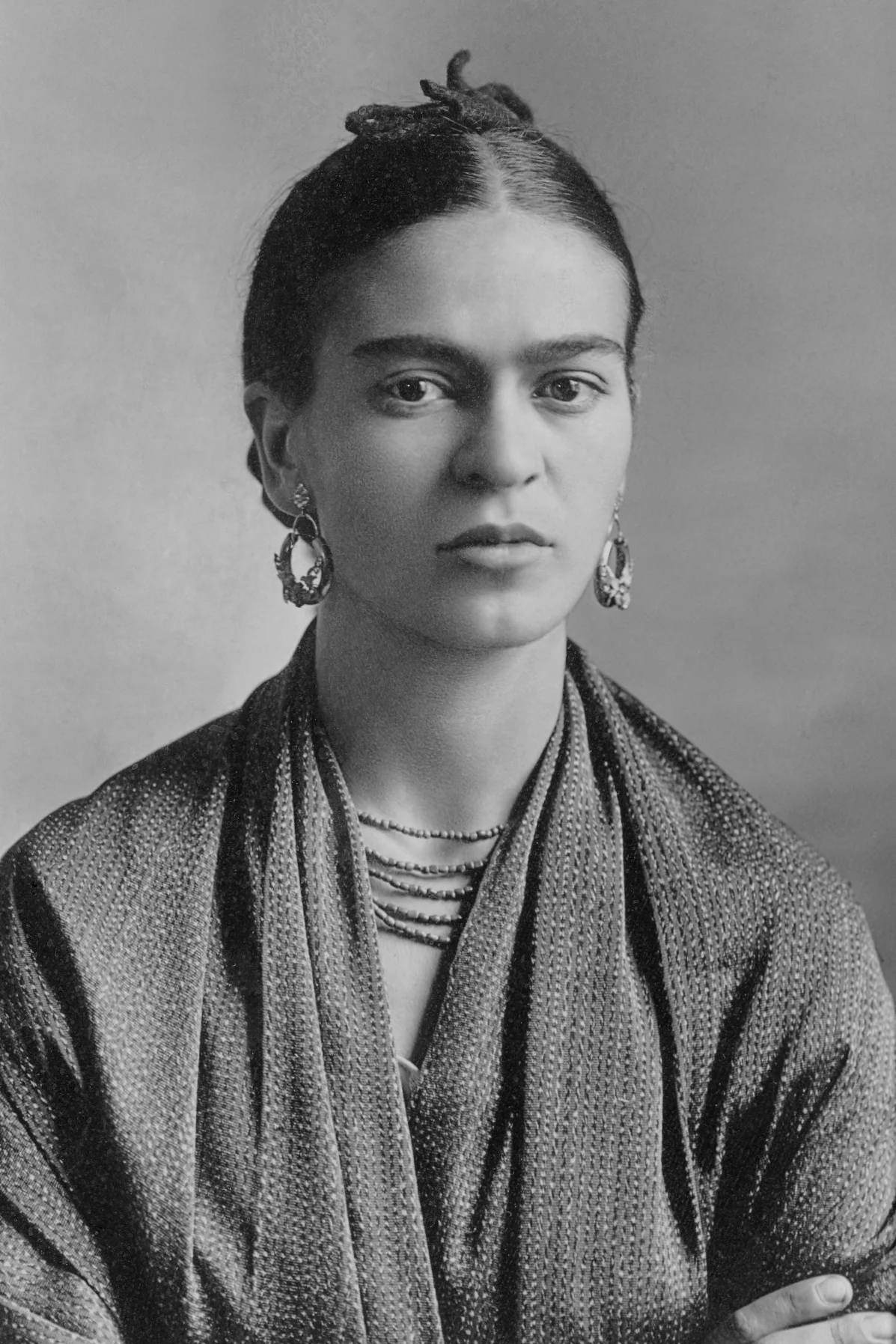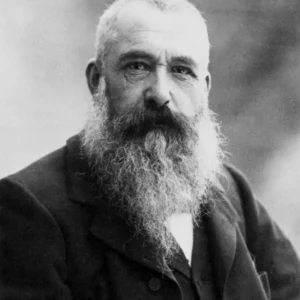Frida Kahlo, born Magdalena Carmen Frida Kahlo y Calderón on July 6, 1907, in Coyoacán, Mexico, is one of the most iconic and enigmatic figures in the history of art. Known for her vivid, emotionally charged self-portraits, Kahlo’s work delves deep into themes of identity, pain, and resilience. Her life story, marked by physical suffering and passionate relationships, is as captivating as her art.
Early Life and Education
Frida Kahlo was born to a German father, Wilhelm (Guillermo) Kahlo, and a Mexican mother, Matilde Calderón y González. Her mixed heritage played a significant role in shaping her identity and artistic vision. Kahlo’s early years were marked by tragedy; at the age of six, she contracted polio, which left her with a limp. This early battle with illness was a precursor to the many physical challenges she would face throughout her life.
Kahlo initially planned to study medicine and enrolled at the National Preparatory School in Mexico City. However, her life took a dramatic turn on September 17, 1925, when a horrific bus accident left her with multiple fractures in her spine, pelvis, and right leg. During her long recovery, Kahlo turned to painting as a way to cope with her pain and isolation.
Artistic Beginnings
Kahlo’s early works were heavily influenced by Mexican folk art, which she infused with elements of surrealism and symbolism. Her self-portraits, often featuring vivid colors and intricate details, became a means of expressing her inner turmoil and physical suffering. Kahlo once said, “I paint myself because I am so often alone and because I am the subject I know best.”
Her early works caught the attention of Diego Rivera, a prominent Mexican muralist. Despite a 20-year age difference, Kahlo and Rivera married in 1929. Their tumultuous relationship, marked by infidelities and intense passion, became a significant influence on Kahlo’s life and art. Rivera admired Kahlo’s unique artistic voice and encouraged her to pursue her own style.
The Iconic Self-Portraits
Frida Kahlo’s self-portraits are perhaps her most recognizable works. These paintings are a vivid portrayal of her physical and emotional struggles. In “The Broken Column” (1944), Kahlo depicts herself with a fractured spine, held together by a corset, with nails piercing her body. This haunting image reflects her constant battle with pain and the numerous surgeries she underwent.
In “Self-Portrait with Thorn Necklace and Hummingbird” (1940), Kahlo portrays herself with a necklace of thorns, a dead hummingbird hanging from it, and a black cat and monkey as companions. This painting symbolizes her suffering and the cultural symbolism of her Mexican heritage.
“The Two Fridas” (1939) is another iconic piece where Kahlo explores her dual identity. The painting shows two versions of herself sitting side by side, one in traditional Mexican attire and the other in a European-style dress. The exposed hearts and blood vessels connecting the two figures symbolize her emotional and cultural struggles.
Personal Struggles and Triumphs
Kahlo’s life was marked by a series of personal tragedies and triumphs. Her marriage to Diego Rivera was a source of both immense joy and profound sorrow. Rivera’s infidelities, including an affair with Kahlo’s sister, Cristina, deeply hurt her. Despite these challenges, their bond remained strong, and they often drew inspiration from each other’s work.
In addition to her tumultuous relationship with Rivera, Kahlo faced numerous health issues. Her injuries from the bus accident required multiple surgeries, and she lived with chronic pain throughout her life. Despite these physical challenges, Kahlo’s spirit remained unbroken. She once said, “At the end of the day, we can endure much more than we think we can.”
Political Activism and Cultural Identity
Frida Kahlo was not only an artist but also a passionate political activist. She was a staunch supporter of communism and often incorporated political themes into her work. Her home, La Casa Azul (The Blue House), became a gathering place for intellectuals and activists, including Leon Trotsky, who sought refuge there in the late 1930s.
Kahlo’s work is deeply rooted in her Mexican heritage. She often incorporated indigenous elements and pre-Columbian symbols into her paintings. Her use of traditional Mexican clothing, such as Tehuana dresses, and her fascination with Mexican folk art reflect her pride in her cultural identity.
Legacy and Impact
Frida Kahlo’s legacy extends far beyond the world of art. Her unapologetic exploration of pain, identity, and resilience has made her an enduring feminist icon. Kahlo’s work resonates with audiences around the world, transcending cultural and temporal boundaries.
In the years following her death on July 13, 1954, Kahlo’s work gained significant recognition. The feminist movement of the 1970s played a crucial role in rediscovering her art and highlighting her contributions to the world of art and culture. Today, her works are celebrated in major museums and exhibitions worldwide.
La Casa Azul, Kahlo’s childhood home and later her residence with Rivera, has been transformed into the Frida Kahlo Museum. It stands as a testament to her life and work, attracting visitors from all over the world who seek to connect with the artist’s enduring spirit.
Conclusion
Frida Kahlo’s life and art are a testament to the power of resilience and self-expression. Her ability to transform personal pain into profound and evocative artwork has left an indelible mark on the history of art. Kahlo’s exploration of identity, gender, and cultural heritage continues to inspire and resonate with people across generations.
Her legacy is not just confined to the canvas; it lives on in the hearts and minds of those who see in her work a reflection of their own struggles and triumphs. Frida Kahlo remains a beacon of strength and creativity, reminding us that art can be a powerful tool for healing and self-discovery.
From her early beginnings to her lasting impact, Frida Kahlo’s story is one of passion, pain, and art. Her contributions to the world of art and culture are celebrated, ensuring that her legacy will endure for generations to come. Through her paintings, Kahlo invites us to look beyond the surface and explore the depths of the human experience, making her one of the most influential and beloved artists of all time.



